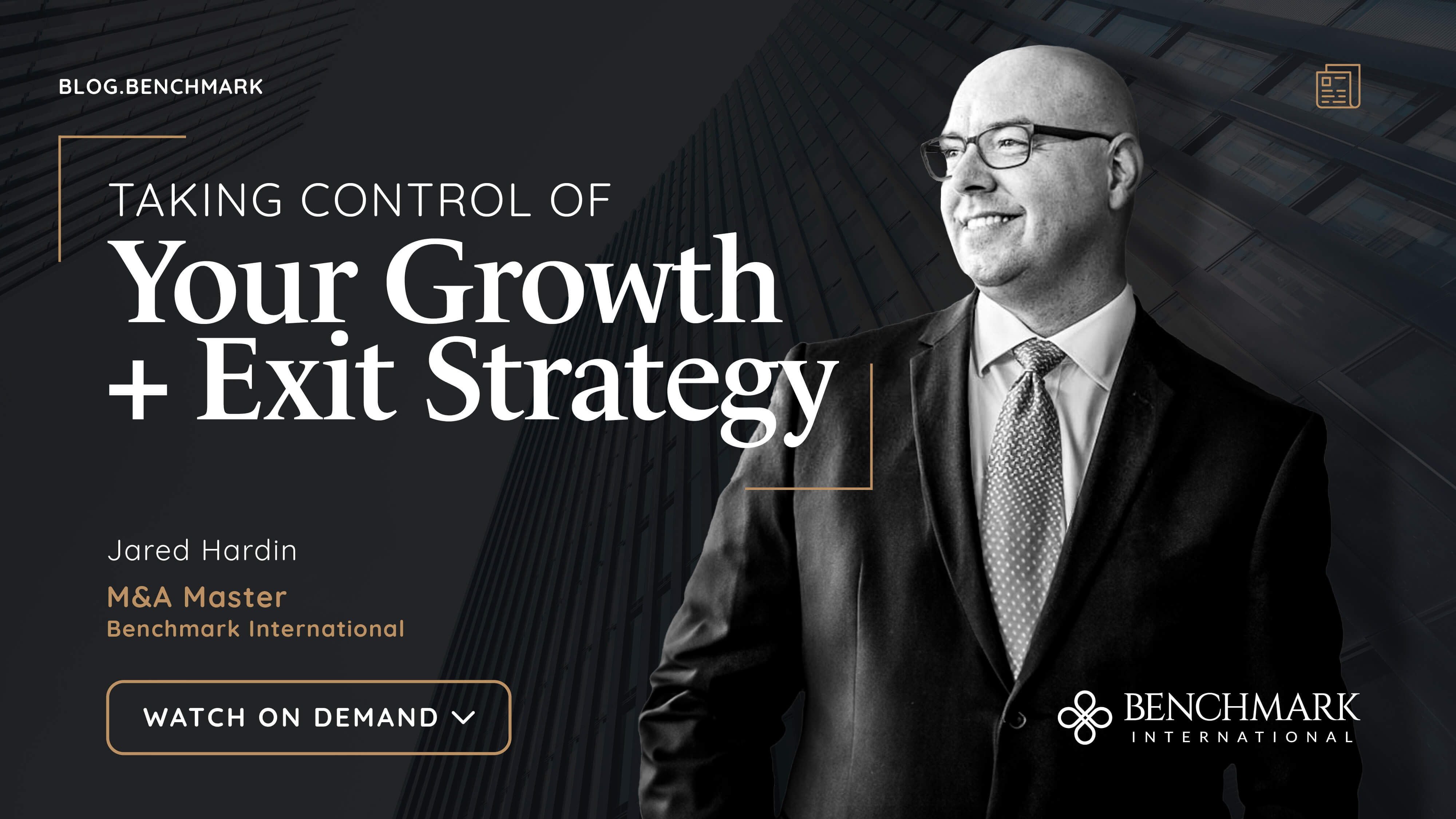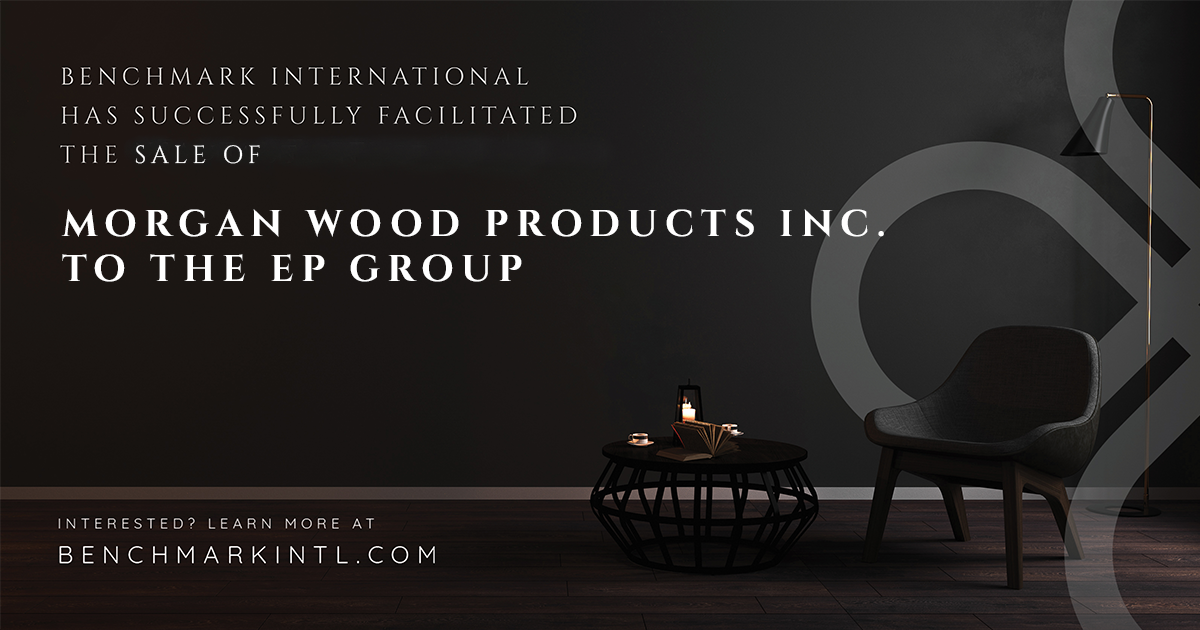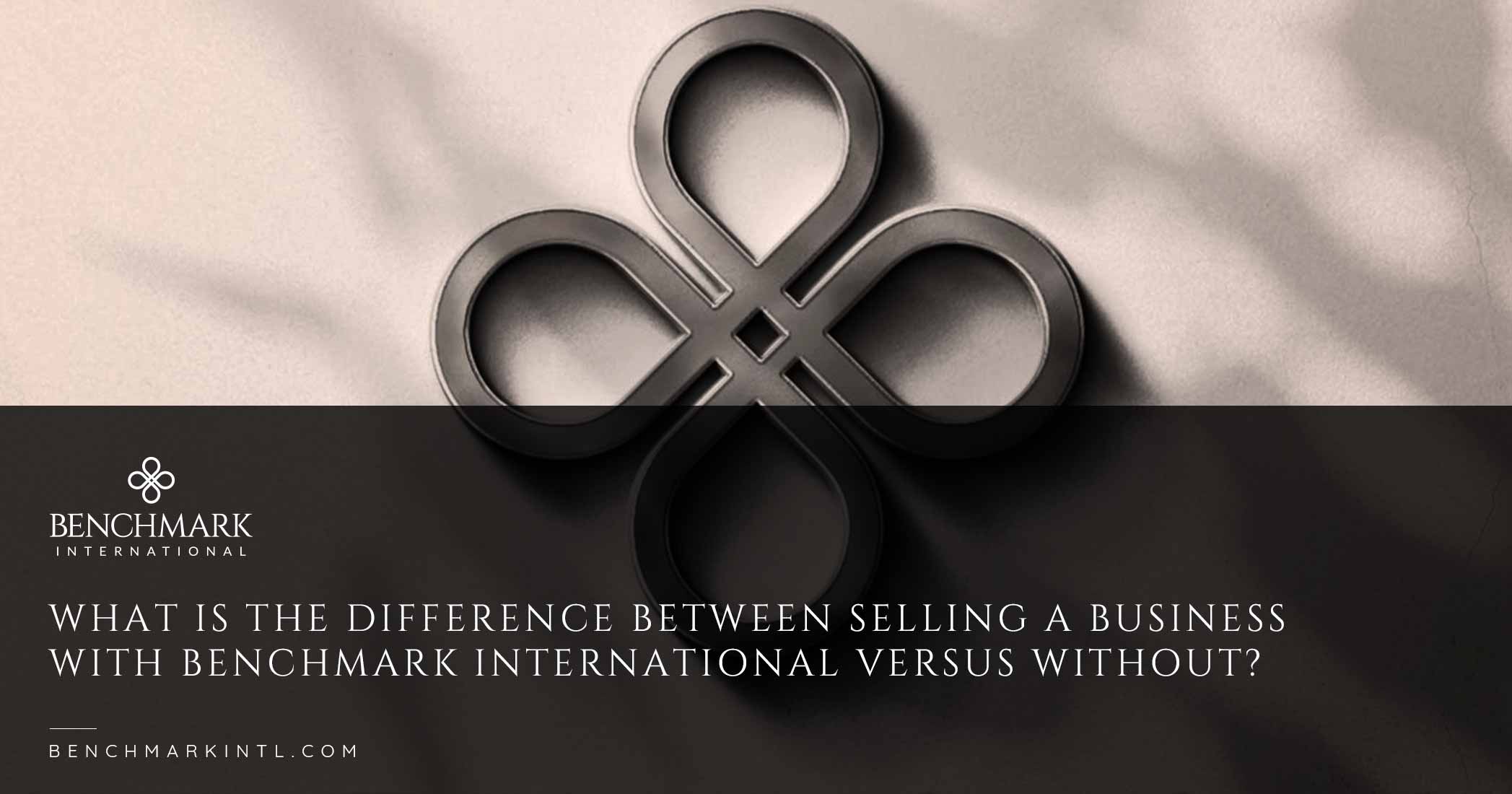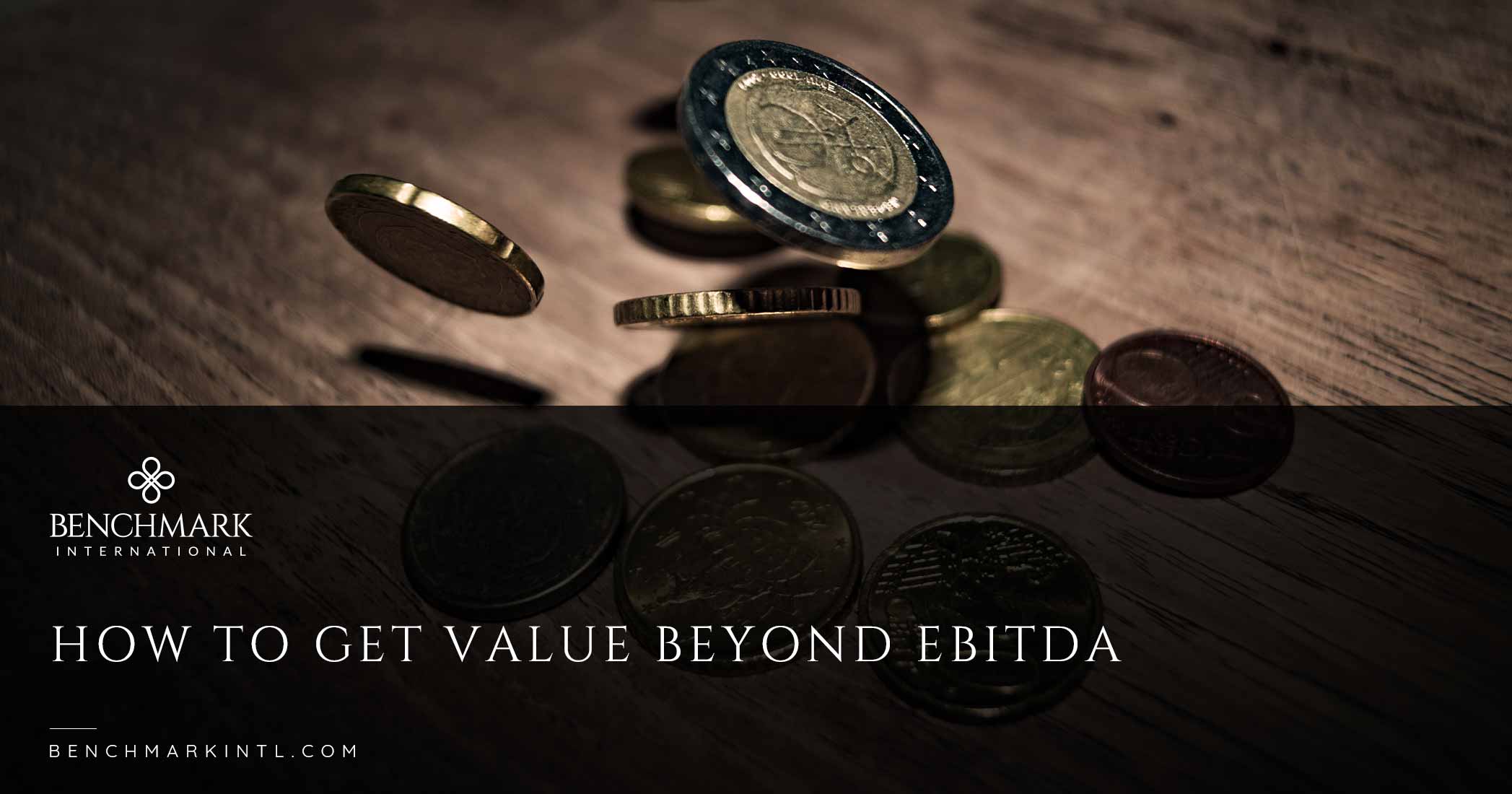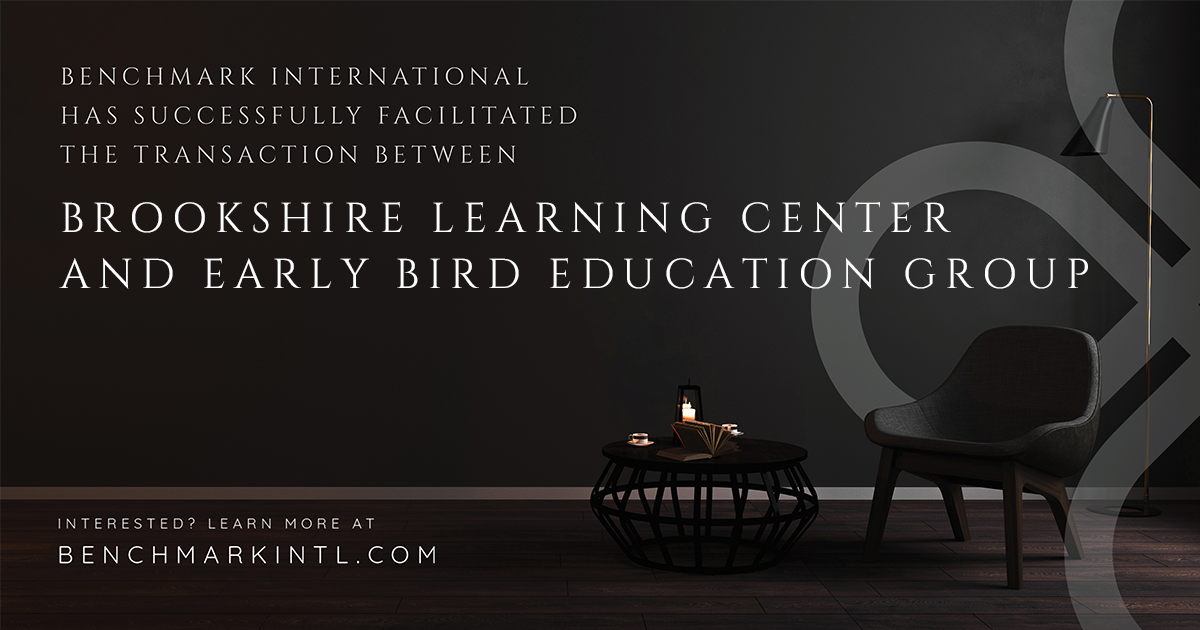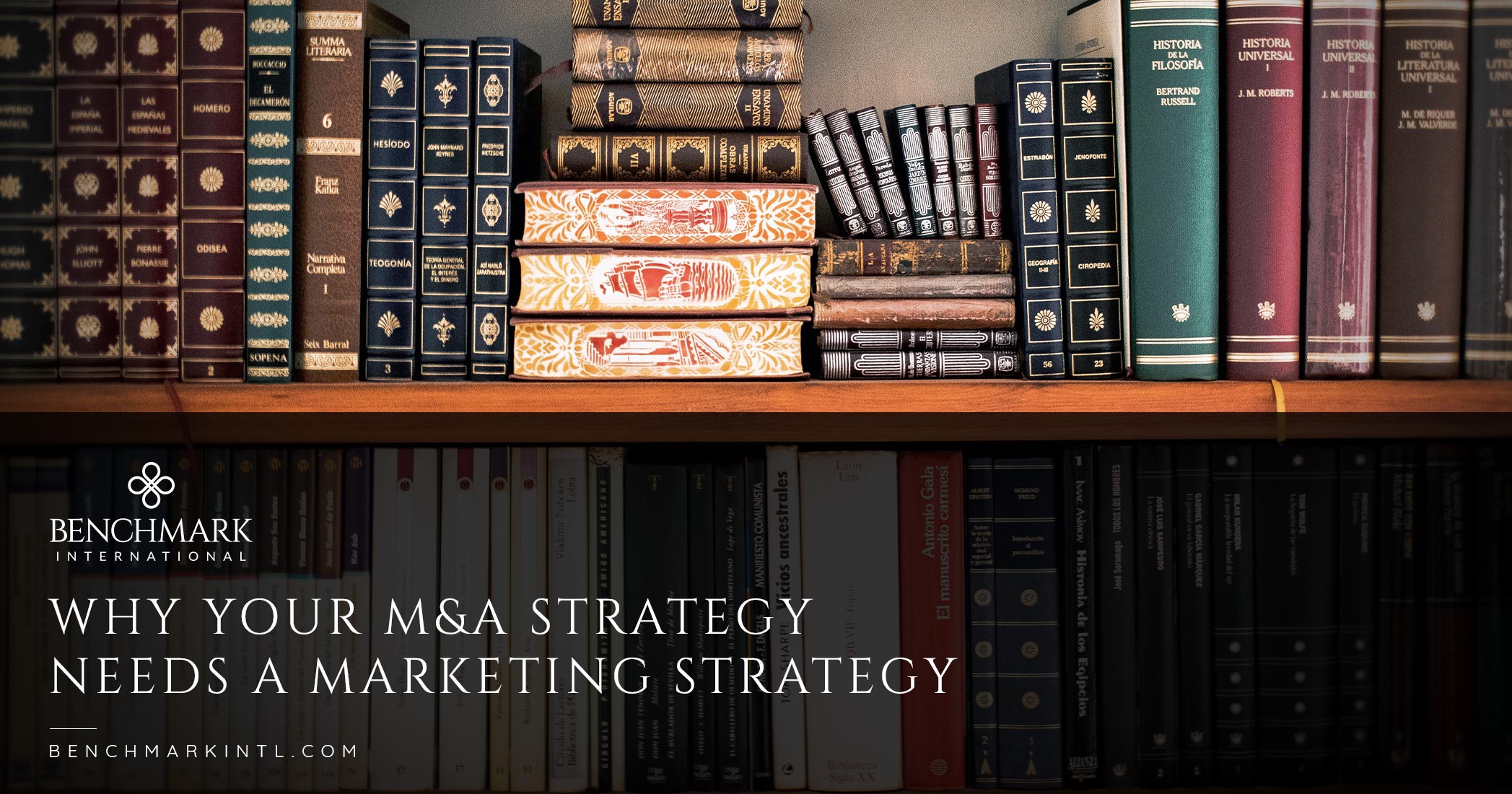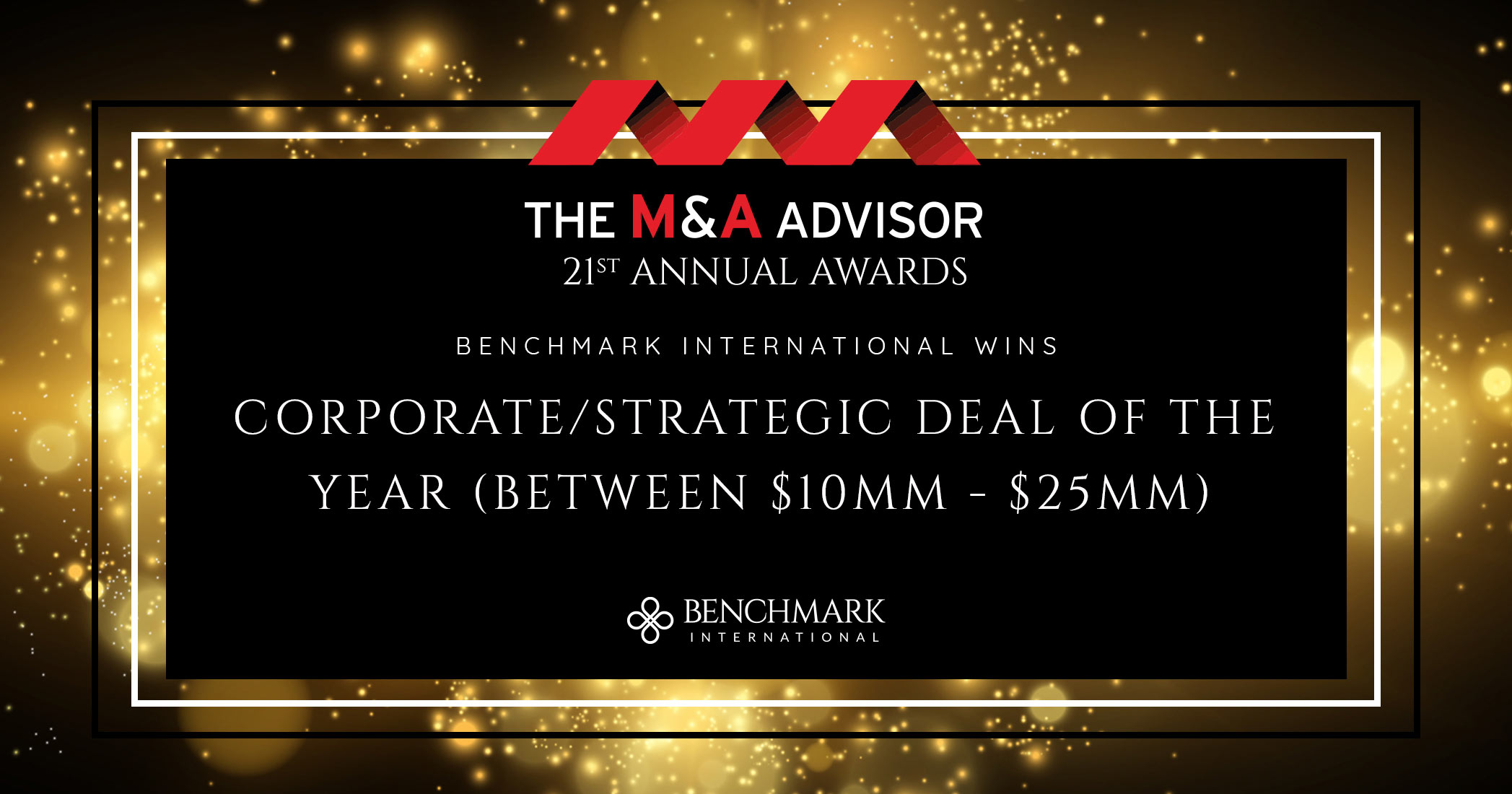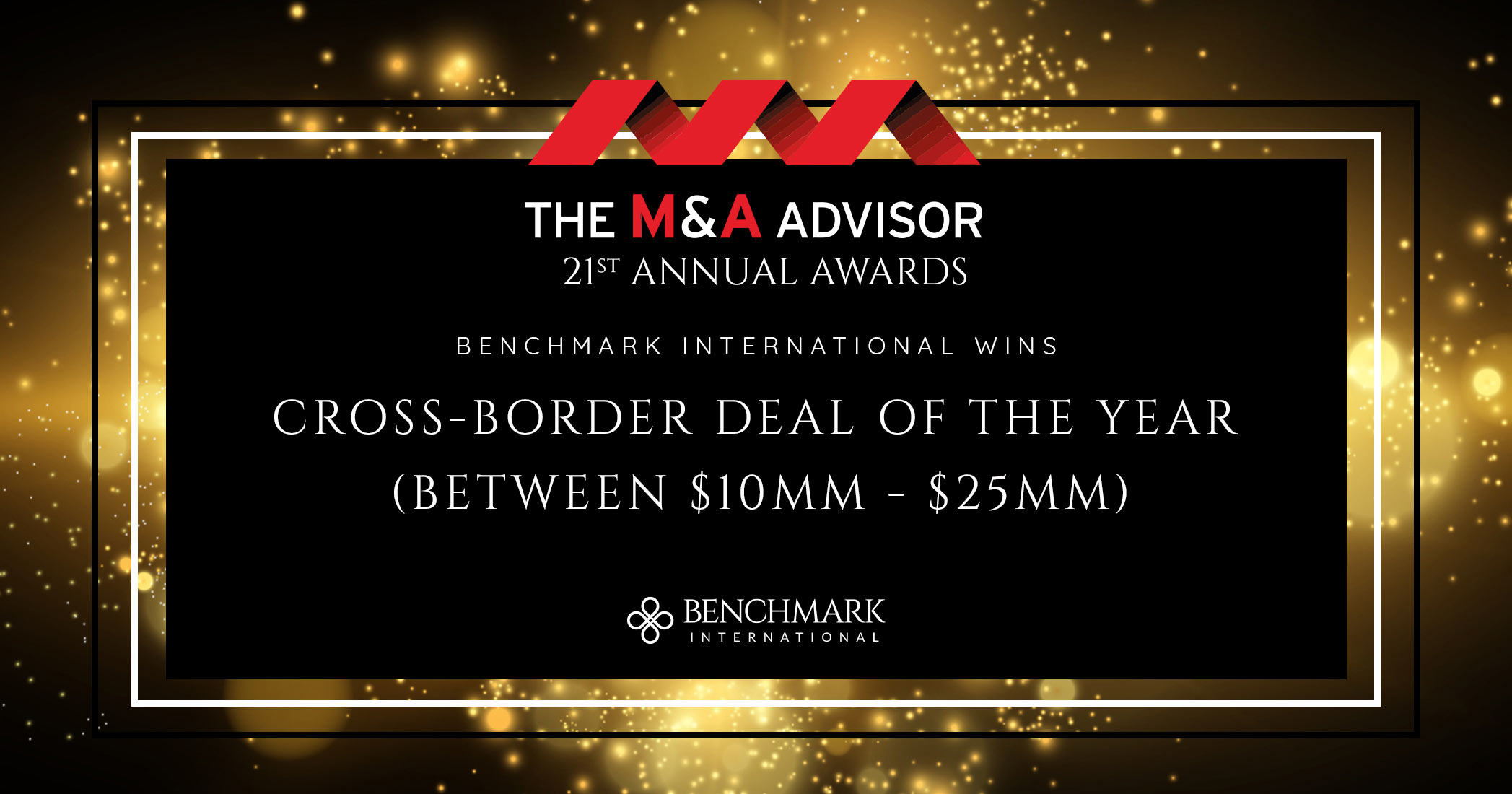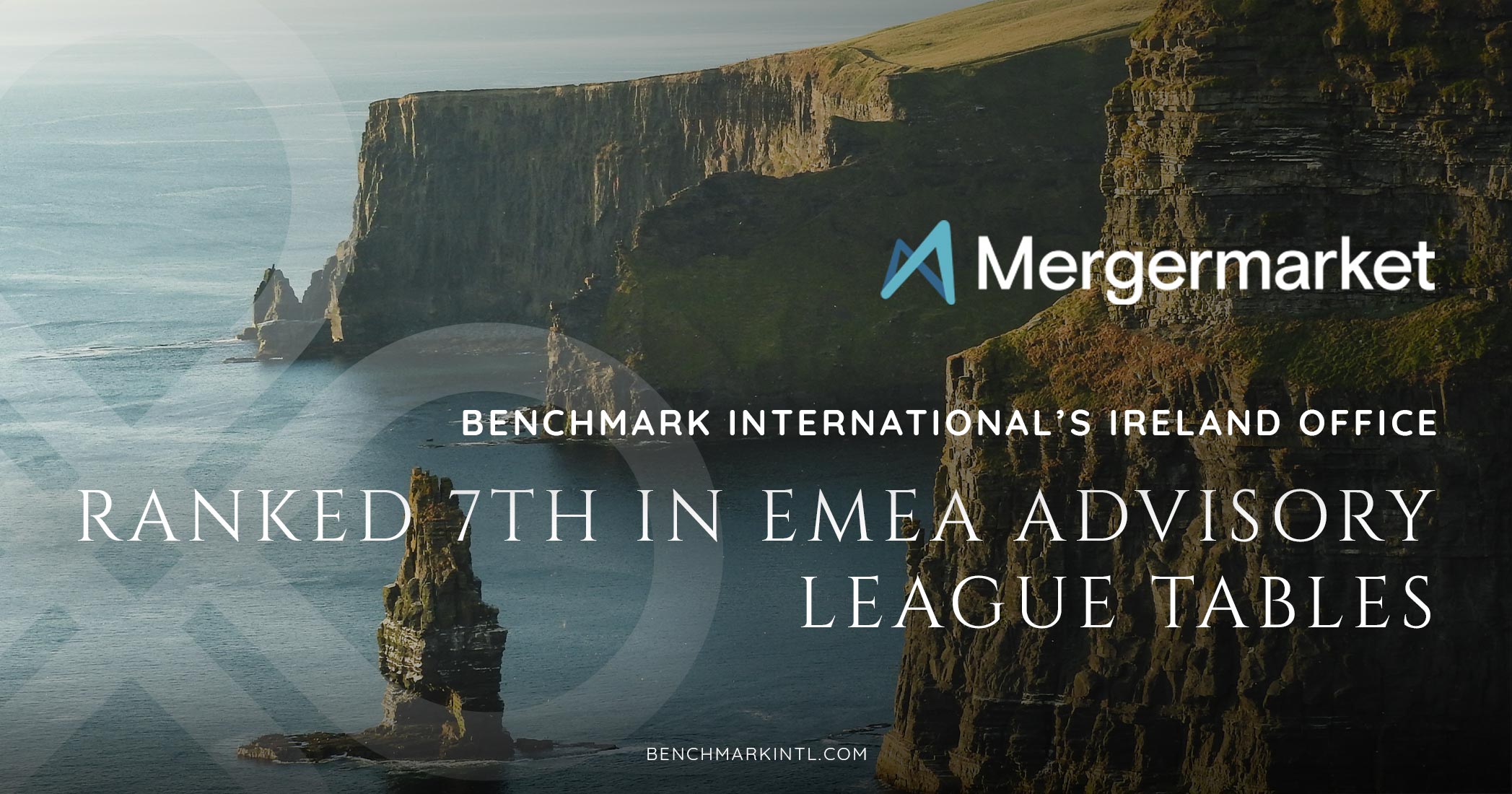When it comes to selling a company, quite a few factors need to be considered to extract the most value from a sale.
READ MORE >>Archives
When Is The Right Time To Sell Your Business?
Unlocking Business Success: On-demand Webinar - Taking Control Of Your Growth And Exit Strategy
In the fast-paced business world, navigating growth and planning for a successful exit strategy is a challenge every business owner eventually faces. The journey to success involves understanding the nuances of value, timing growth in the market, and ensuring a perfect fit for your business.
READ MORE >>Share this:
Benchmark International Is A Finalist For 22 M&A Advisor Awards
Benchmark International is a finalist for an impressive 22 awards in the 22nd Annual M&A Advisor Awards. Our transactions and firm were among hundreds of entries from 450 participating companies that have successfully passed the initial evaluation stage. The process will continue as the independent panel of judges further evaluates and selects a winner from the finalists in each category. The judges are peers in the mergers and acquisitions transaction space, and it is quite an accomplishment to be recognized thus far as a finalist.
READ MORE >>Share this:
Unlocking Your Company's Potential: The Transformative Power Of An M&A Firm
If you are considering selling your company, planning your retirement or succession plan, or seeking a growth or exit strategy, you have quite a few options. You can find a buyer and pursue a deal on your own.
READ MORE >>
Share this:
Use Of Escrows In Lower Middle Market M&A
An escrow account is a financial account managed by a third party, such as a bank or an attorney, and is used to hold funds or assets until specific conditions are met.
READ MORE >>Share this:
How To Sell In A Buyer’s Market
In recent years there has been a significant degree of volatility in the market, but it is generally agreed that we will likely enter a “buyer’s market” soon. Most hear “buyer’s market” about real estate or consumer goods,
READ MORE >>Share this:
Benchmark International facilitated the sale of Morgan Wood Products Inc. to the EP Group
Morgan Wood Products, Inc. is a leading broker of pallets based in Columbus, Ohio, serving 41 states and provinces. The COVID crisis fundamentally altered the pallet industry, and Morgan Wood was well-positioned to expand its operations due to the market shift. By 2022 the company had reached the stage where its owner and founder, Luke Reinstetle, saw the benefit of bringing in outside capital and resources to keep its growth moving ahead.
READ MORE >>Share this:
Benchmark International Facilitated the Transaction of American Engineers, Inc. to STV Group, Inc.
The seller, American Engineers, Inc (AEI), is an engineering firm comprised of several offices. Their focus is primarily on transportation, industrial, utility, and municipality space.
With decades of experience across multiple markets and geographies, they have risen to the top of their respective field. Their motto “Designing Your Future”, paired with investments in innovative technology and the most proficient people, allow them to continually deliver excellence.
READ MORE >>Share this:
What Is The Difference Between Selling A Business With Benchmark International Versus Without?
If you are considering selling your business, there are many reasons why you are better off with the guidance of a professional M&A team. There are many reasons why partnering with Benchmark International to sell your company can make a significant difference in both the process and the result.
READ MORE >>Share this:
How To Get Value Beyond EBITDA
When selling a business, most owners focus on the bottom line, typically represented by EBITDA (Earnings Before Interest, Taxes, Depreciation, and Amortization). However, while EBITDA is an essential metric for valuing a business, it is not the only one that matters. There are other factors that potential buyers consider when evaluating a business, and as a seller, it is crucial to understand these factors to get the best possible value for your company.
READ MORE >>Share this:
Benefits Of Selling Your Staffing Company In 2023
The staffing industry has experienced steady growth over the past decade, which expects to continue in the foreseeable future. The lower middle market is an ideal space for mergers and acquisitions in the staffing sector, as this industry segment typically comprises small and medium-sized businesses. For staffing companies in this market, selling to a more prominent firm can offer a range of benefits.
READ MORE >>Share this:
Benchmark International Facilitated the Transaction Between Brookshire Learning Center and Early Bird Education Group
The seller, Brookshire Learning Center, is an early childhood development institution that prepares children for learning in an engaging and secure atmosphere. Their numerous premier award-winning facilities stretching across Indiana, support the needs of families in local communities by superseding conventional daycare options.
READ MORE >>Share this:
Benchmark International Facilitated the Transaction Between Electromagnetic Industries LLP and Olympic Controls Corporation
Benchmark is pleased to announce the transaction between Electromagnetic Industries LLP and Olympic Controls Corporation. The reason for targeting was strategic expansion.
READ MORE >>Share this:
Why Do I Need An Exit Strategy?
Don’t Delay
As a business owner, an exit plan is critical to preparing you and your company ready for retirement or your next act. Unfortunately, many business owners do not realize the importance of exit strategies, so they don’t feel like it’s worth taking the time to craft one. This is often a huge mistake. It doesn’t matter if you do not plan on selling or retiring soon. However, it’s wise to have an exit strategy for several reasons.
READ MORE >>Share this:
Benchmark International Facilitated The Transaction Between Integrity 1st, Inc And Onedigital
Benchmark International is pleased to announce the transaction between Integrity 1st, Inc and OneDigital, a portfolio company of Onex. This transaction creates a strategic expansion into the Colorado insurance market.
READ MORE >>Share this:
Benchmark International Facilitated the Transaction Between Corptemps, Inc. and an Undisclosed Buyer
Benchmark International’s client Corptemps, Inc., is a staffing company located in Niles, Ohio. They have a fierce reputation for providing high caliber candidates to the manufacturing, warehousing, heavy industrial, clerical, and food production industries for over 20 years. They have become an integral part of the business community by assisting with screening, hiring, and human resource needs.
READ MORE >>Share this:
Benchmark International Successfully Facilitated the Transaction Between C4 Laboratories and SC Labs
C4 Laboratories (a provider of cannabis testing services) was recently acquired by SC Labs. SC Labs is a licensed and accredited cannabis testing agency with locations spanning: California, Colorado, Michigan, Oregon, and Arizona.
READ MORE >>Share this:
Why Your M&A Strategy Needs A Marketing Strategy
Several elements play into a successful merger or acquisition, from finance to sales and from operations to HR. Leading up to a transaction, it’s not uncommon for business owners to focus more on these elements and not the area of marketing as an important part of their M&A strategy.
READ MORE >>Share this:
Why Should I Sell My Business?
Consider putting your company on the market for several reasons. The reasons can vary based on the stage of your business's lifecycle and what your goals for the future may be. No matter your situation, it is always a good idea to step back and look at the big picture to figure out your options.
READ MORE >>Share this:
Benchmark International Successfully Facilitated a Transaction Between JDI Ventures, Inc. and The Brydon Group
Benchmark International has successfully facilitated a transaction between Florida-based JDI Ventures, Inc (“JDI,” DBA “Peak Performance Solutions”) and The Brydon Group, based in Greenwich, Connecticut.
READ MORE >>Share this:
Benchmark International Successfully Facilitated The Transaction Between Premiere Lawn Service, Inc. And Monarch Landscape Companies
Benchmark is pleased to announce the transaction between Premiere Lawn Service, Incorporated, and Monarch Landscape Companies, a portfolio company of Audax Private Equity. The transaction creates a strategic expansion into the Washington state market.
READ MORE >>Share this:
What Market Conditions Might Impact My Company Valuation?
Company valuations are crucial because they determine how much you can sell your business for, and the higher the valuation, the more money you walk away with. And several internal and external factors can affect your valuation.
READ MORE >>Share this:
How To Sell In A Buyer’s Market
In recent years there has been a significant degree of volatility in the market, but it is generally agreed that we will likely enter a “buyer’s market” soon. Most hear “buyer’s market” about real estate or consumer goods, where the number of homes on the market exceeds demand for housing, so naturally, prices drop. However, in M&A, this is a bit more complex.
READ MORE >>Share this:
Benchmark International Successfully Facilitated The Transaction Between Integrity Arts & Technology, Inc. And Swagger Agency
Benchmark International has successfully facilitated the Integrity Arts & Technology, Inc. (IDEAS) acquisition by Swagger Agency (20MM LLC).
READ MORE >>Share this:
Benchmark International Facilitated the Transaction between Ultra Clean Systems Inc. and Getinge AB
Benchmark International has successfully facilitated a transaction between Florida-based Ultra Clean Systems Inc. (Ultra Clean Systems) and Sweden-based Getinge AB (Getinge).
READ MORE >>Share this:
M&A In Higher Education
Higher education institutions have been facing a watershed moment. Flagship universities and brand-name colleges are still drawing enrollees. But the number of colleges that have closed in the last decade (~200) has quadrupled over the previous decade. This is why mergers and acquisitions in higher education are becoming more commonplace than ever. In fact, in the last four years, there have been 95 college mergers—a 21% increase over the 78 that took place in the 18 years prior. Most of these mergers (40%) are being executed within private and nonprofit schools, and most deals involve schools in the same state with student bodies under 5,000. It is the less prestigious schools that are struggling the most.
READ MORE >>Share this:
The Role Of Timing In M&A Deals
Several important factors play into the deal-making process if you are a business owner considering a merger and acquisition for your lower- to middle-market company. Timing is often one of these factors.
READ MORE >>Share this:
What is Net Working Capital?
What is Net Working Capital?
Introduction
Working capital also called net working capital, measures a company's financial security. According to Jensen and Meckling, authors of the new famous Theory of the Firm (1976), the components of working capital measure the firm's shareholder value. Working capital helps evaluate a company's short-term health, liquidity, and ability to invest and grow its operations. Working capital is defined as current assets less current liabilities. Current assets often include cash, accounts receivable, customer unpaid bills, and inventory, with current liabilities encompassing accounts payable and short-term debts, to name a few.
READ MORE >>Share this:
What Is The Denominator Effect?
When it comes to selling your business, and you are considering waiting or pausing, there are several factors to consider, such as market conditions and interest rates. But there is also something called the denominator effect.
READ MORE >>Share this:
The Public-To-Private Trend For New Paths To Growth
Many individuals at large institutions that trade in the public markets are turning to private ownership and pursuing majority equity positions in lower middle-market companies and even creating their own funds. This public-to-private trend is partially being driven by current and expected public market volatility over the next few years, combined with individual business circumstances, all with the expectation for a brighter future. The recent stock market instability is presenting attractive opportunities for companies that may perform better in the private market. Private equity and private investors have ample capital available to them at a time when public market valuations are sinking. The interest is coming from both private equity funds and strategies, as private markets are gaining ground on public markets. Take-privates are on pace for the second year in a row at $100 billion or more in deal value. That is a first for the industry in more than a decade.
READ MORE >>Share this:
Benchmark International Awarded Corporate / Strategic Deal Of The Year ($10MM - $25MM)
Benchmark International was awarded Corporate/Strategic Deal of the Year ($10MM - $25MM) for the transaction of Performance Equipment to Mid State Restoration in The M&A Advisor's 21st Annual M&A Advisor Awards.
READ MORE >>Share this:
Benchmark International Awarded Cross-Border Deal Of The Year ($10MM - $25MM)
Benchmark International was awarded Cross-Border Deal of the Year ($10MM - $25MM) for the sale of Summus Group to Sia Partners at The M&A Advisor’s 21st Annual M&A Advisor Awards.
READ MORE >>Share this:
Benchmark International Named Leading Specialist M&A Advisory Firm Of The Year 2023
Benchmark International has been named Leading Specialist M&A Advisory Firm of the Year 2023 in the United Kingdom by Acquisition International's Leading Adviser Awards.
READ MORE >>Share this:
Benchmark International Is Pleased To Announce The Transaction Of Chustz Surveying, L.L.C. And GIS Engineering
Benchmark International is pleased to announce the transaction between Chustz Surveying, a Louisiana-Based Surveying Company, and GIS Engineering, a professional service firm across five locations in Louisiana.
READ MORE >>Share this:
Why Competition Matters
How will running a competitive bid process help me?
The lower middle market remains very active, and we anticipate that this trend will continue for the foreseeable future. If you are a business owner, you have probably received unsolicited interest and perhaps even offers for your business. There is a lot of money chasing few deals, so buyers are looking to find off-market deals to build their pipeline and purchase a business below market value to boost their investors’ returns. Having additional buyers at the table tends only to benefit the seller.
When a buyer uncovers an off-market deal, they are often in a better position to buy the business at a discounted price than what they would pay in a formal auction or open bid process. Buyers seek acquisitions to help solve a problem or hit an ROI benchmark. If the buyer can purchase a business below market, then the buyer ends up winning both in the current transaction and future transactions. The business owner is the one who tends to have seller’s remorse. Our team commonly speaks with buyers who will not participate in auction processes because they do not want to pay top dollar, and those buyers know that they are not willing to do what it takes to win the bid.
If you have ever watched an episode of Shark Tank when all the sharks are bidding on an opportunity, you have seen how a competitive bid process can benefit the company pitching to the sharks. When Lori Greiner, Barbara Coroan, Robert Herjavec, Daymond John, Kevin O'Leary, or Mark Cuban share an interest in an opportunity, it often piques the interest of another shark who wants to jump in and try to win the bid. Sometimes, the sharks even go into the deal together. This process also happens for deals within the lower middle market. When two buyers go into a deal together, they are called co-investments. In this case, two can be better than one. However, you will not know if co-investments are an option until you go to market and run a process.
When a seller receives an offer from an unsolicited party, the offer only reflects one party’s view of the value of the business. Businesses are comprised of both tangible and intangible assets. That is, the value of the business lies not only in its tangible assets like machines and inventory but, perhaps more importantly, in the quality of its people, process, customer base, and intellectual property. Acquirers buy businesses for many reasons, including for geographic expansion, product line development, talent acquisition, and competitive advantages, to name a few. Why is a business worth 5x to one buyer but 7x to another? A business's real value is the opportunities an acquirer has post-closing. Ultimately, the only way to know if the offer in hand is a representation of the market or even the best option for the business owner is to explore multiple views of the value of the business.
If you move forward with the one offer available, what will you do if the deal falls apart during due diligence? Due diligence can be a time-consuming and overwhelming process. If you go through the due diligence process and the deal is unsuccessful, what? You will not have a second or third option. The sale process can be very emotional. Often, when a deal closing is not successful, a firm that ran a bid process will typically have a handful of bidders that they are able to re-engage to work toward a successful closing. The deal team can utilize the initial data request and due diligence process to make the workload lighter the second time around. An experienced M&A deal team will be able to craft a strategy to target active buyers from previous efforts and bring them back to the table. However, if you only have one option, you must start over from the beginning. By the time you start over, you are at risk of missing the market, which might cost you tens of millions of dollars.
The other great aspect of running a bid process is that you have leverage during due diligence. Typically, when a letter of intent is signed, the negotiation power shifts from the seller to the buyer. If you have other suitors waiting in the background, an experienced M&A deal team can use that competitive tension to help a seller secure the best deal on the market and keep the buyer in check. The buyer who ultimately wins a formal auction process knows that there were other suitors competing for the bid.
It is crucial for any seller considering a sale to hire a capable sell-side M&A firm to take them to market. A dedicated sell-side team virtually assures you that you will have multiple suitors and bids. You will be able to see several different views on the value of your business and be able to determine the optimal deal structure. The process will allow you to explore other partnerships and understand what competitive advantage various firms can bring to the table. If you compare the company sale process to dating, it is good to know what other suitors offer so you can pick the best one for you! Having an experienced M&A team take you to market to uncover your best options will give you the peace of mind that you have the information you need to make the best decision for you and your business.
Author
Kendall Stafford
Managing Partner
Benchmark International
T: +1 512 347 2000
E: STAFFORD@BENCHMARKINTL.COM
READ MORE >>
Share this:
Don’t Miss Benchmark International’s Newest Edition of The Mark
Share this:
Big Data & Cloud Storage Security Industry Report
Global Big Data Security Market
The global big data security market was valued at $24 billion in 2021 and is projected to reach $115 billion by 2030. That is a compound annual growth rate (CAGR) of 19% over the forecast period of 2022 to 2030. North America led the global market and is expected to grow at a CAGR of 17.5%.
READ MORE >>Share this:
Benchmark International’s Ireland Office Ranked 7th In Emea Advisory League Tables
Benchmark International is pleased to announce that it has been ranked 7th in the top 10 by Mergermarket for the number of deals it has conducted in Ireland. KPMG, Deloitte, Goldman Sachs, and PwC are amongst the companies to also rank in the top 10. An Acuris company, Mergermarket delivers M&A intelligence, data, and research.
READ MORE >>Share this:
The Green Economy Update And Outlook
The global green industry is forecast to grow at a significant rate between 2022 and 2026. Over the past decade, the green economy’s market capitalization grew from $2 trillion in 2009 to more than $7 trillion in 2021. It also nearly doubled its share of the global investable market from 4% to more than 7%. Last year, the market grew at a steady rate and is expected to continue to do so with the growing adoption of strategies by key players.
READ MORE >>Share this:
Benchmark International Facilitated The Transaction Between Neil Dornbusch And Associates And Anderson Process
The seller, Neil Dornbusch and Associates, located in New Prague, Minnesota, has been providing pumping and fluid handling solutions since 1988. They fabricate and custom-build food processing plants, specializing in sanitary and stainless-steel applications. They also assist with the design of fluid handling systems.
READ MORE >> Benchmark International
Benchmark International  Benchmark International
Benchmark International 

